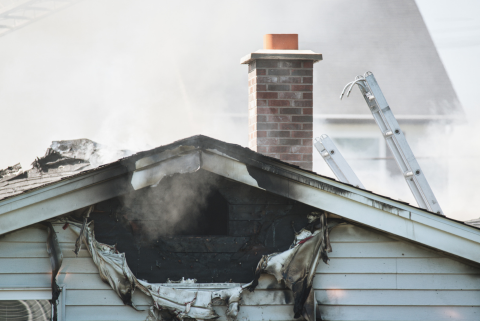
House Fire Prevention Tips
According to the National Fire Protection Association (NFPA), 86% of reported house fires from 2014-2018 were started by five general causes: cooking, heating equipment, electrical distribution or lighting equipment, intentional fire setting, and smoking materials.1
Cooking starts about half of U.S. house fires.1 Most cooking fires in the home involve the kitchen stove.2 To lower your risk of a kitchen fire, follow these steps:
- Never leave the kitchen while cooking on the stovetop.
- Make use of timers to keep track of cooking times, particularly for foods that require longer cook times.
- Keep things that can catch fire at least 3 feet away from the cooking area.
- Avoid long sleeves and hanging fabrics that can come in contact with a heat source.
With the holidays approaching, it is especially important to cook with caution as more than three times the daily average of home cooking fires occurs on Thanksgiving, and nearly double the amount of home cooking fires occur on Christmas Eve and Christmas Day.2
Heating equipment is the second overall leading cause of reported house fires. Fire departments responded to an estimated average of 44,210 fires involving heating equipment per year from 2016-2020.3 If you plan on utilizing heating equipment this winter, make sure to follow these safety precautions:
- Have a 3 foot “kid-free zone” around open fires and space heaters.
- Keep anything that can burn 3 feet from heating equipment.
- Plug only one heat producing appliance into a wall or outlet at a time.
- Never use an extension cord with a space heater or other heat producing appliance.
- Never use your stove or oven for heating.
Lastly, if you plan on decorating for the upcoming holidays, ensure that you are using lights and cords safely. U.S. fire departments respond to nearly 800 home decoration fires (not including Christmas trees) each year.4
- Consider battery operated flameless candles.
- Check electrical cords often and replace if they are damaged or loose.
- Follow manufacturer’s instructions on how many strings you can connect, and where you may use them.
In September, Farm Bureau Insurance announced a new technology called Ting. Ting is a simple plug-in sensor, created by Whisker Labs, that monitors a home for electrical hazards that can lead to fires. It provides early detection of otherwise invisible problems in home wiring, appliances and devices, and utility-provided power. In November, Farm Bureau Insurance plans to provide Ting for free to 10,500 policyholders. Stay tuned for more information.
For more fire prevention tips and information, please visit the links below.
Most Home Fires Result from 5 General Causes1



